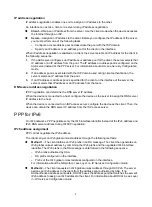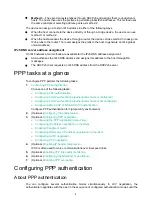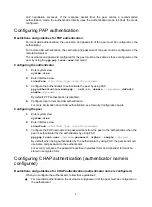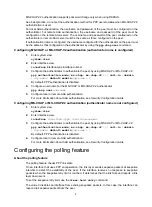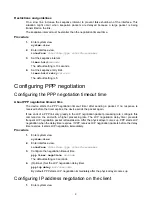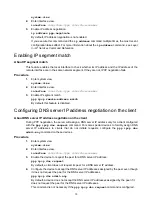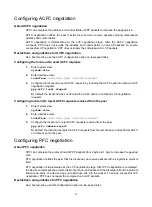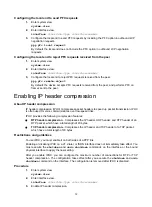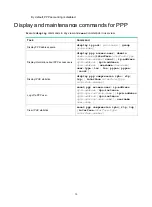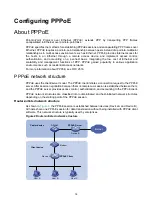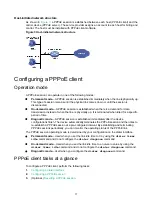
12
Configuring the local end to send PFC requests
1.
Enter system view.
system-view
2.
Enter interface view.
interface interface-type interface-number
3.
Configure the local end to send PFC requests by including the PFC option in outbound LCP
negotiation requests.
ppp pfc local request
By default, the local end does not include the PFC option in outbound LCP negotiation
requests.
Configuring the local end to reject PFC requests received from the peer
1.
Enter system view.
system-view
2.
Enter interface view.
interface interface-type interface-number
3.
Configure the local end to reject PFC requests received from the peer.
ppp pfc remote-reject
By default, the device accepts PFC requests received from the peer, and performs PFC on
frames sent to the peer.
Enabling IP header compression
About IP header compression
IP header compression (IPHC) compresses packet headers to speed up packet transmission. IPHC
is often used for voice communications over low-speed links.
IPHC provides the following compression features:
•
RTP
header
compression
—
Compresses the IP header, UDP header, and RTP header of an
RTP packet, which have a total length of 40 bytes.
•
TCP
header
compression
—Compresses the IP header and TCP header of a TCP packet,
which have a total length of 40 bytes.
Restrictions and guidelines
To use IPHC, you must enable it on both sides of a PPP link.
Enabling or disabling IPHC on a VT, dialer, or ISDN interface does not immediately take effect. You
must execute the
shutdown
and
undo shutdown
commands on the interface or the bound
physical interface to apply the new setting.
After you enable IPHC, you can configure the maximum number of connections for RTP or TCP
header compression. The configuration takes effect after you execute the
shutdown
and
undo
shutdown
command on the interface. The configuration is removed after IPHC is disabled.
Procedure
1.
Enter system view.
system-view
2.
Enter interface view.
interface interface-type interface-number
3.
Enable IP header compression.






